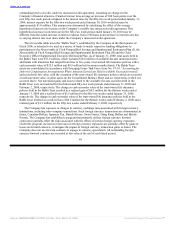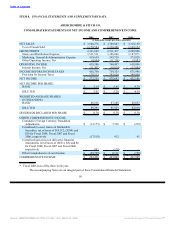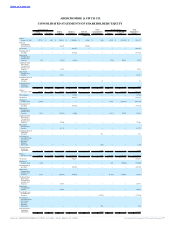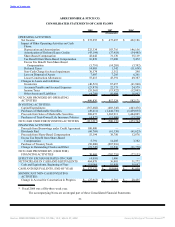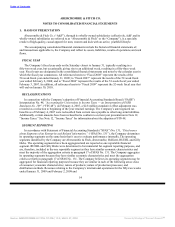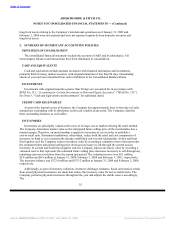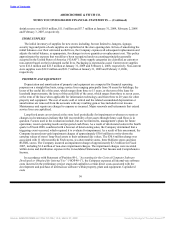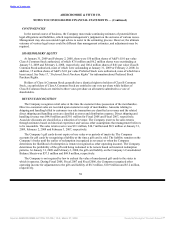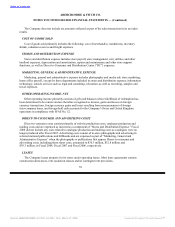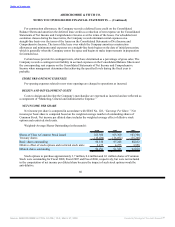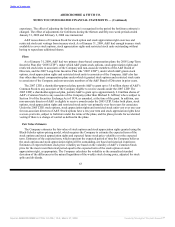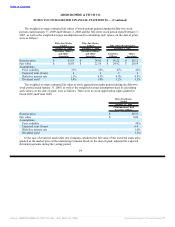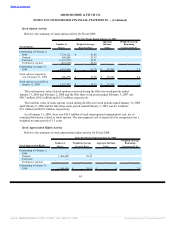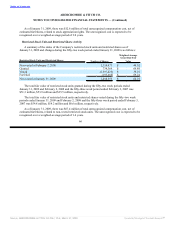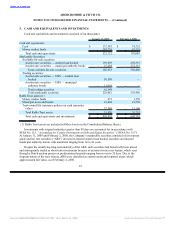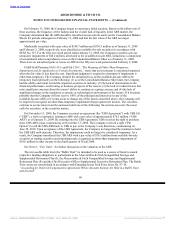Abercrombie & Fitch 2008 Annual Report Download - page 62
Download and view the complete annual report
Please find page 62 of the 2008 Abercrombie & Fitch annual report below. You can navigate through the pages in the report by either clicking on the pages listed below, or by using the keyword search tool below to find specific information within the annual report.
Table of Contents
ABERCROMBIE & FITCH CO.
NOTES TO CONSOLIDATED FINANCIAL STATEMENTS — (Continued)
CONTINGENCIES
In the normal course of business, the Company must make continuing estimates of potential future
legal obligations and liabilities, which require management’s judgment on the outcome of various issues.
Management may also use outside legal advice to assist in the estimating process. However, the ultimate
outcome of various legal issues could be different than management estimates, and adjustments may be
required.
SHAREHOLDERS’ EQUITY
At January 31, 2009 and February 2, 2008, there were 150 million shares of A&F’s $.01 par value
Class A Common Stock authorized, of which 87.6 million and 86.2 million shares were outstanding at
January 31, 2009 and February 2, 2008, respectively, and 106.4 million shares of $.01 par value Class B
Common Stock authorized, none of which were outstanding at January 31, 2009 or February 2, 2008. In
addition, 15 million shares of A&F’s $.01 par value Preferred Stock were authorized, none of which have
been issued. See Note 17, “Preferred Stock Purchase Rights” for information about Preferred Stock
Purchase Rights.
Holders of Class A Common Stock generally have identical rights to holders of Class B Common
Stock, except holders of Class A Common Stock are entitled to one vote per share while holders of
Class B Common Stock are entitled to three votes per share on all matters submitted to a vote of
shareholders.
REVENUE RECOGNITION
The Company recognizes retail sales at the time the customer takes possession of the merchandise.
Direct-to-consumer sales are recorded upon customer receipt of merchandise. Amounts relating to
shipping and handling billed to customers in a sale transaction are classified as revenue and the related
direct shipping and handling costs are classified as stores and distribution expense. Direct shipping and
handling revenue was $44.0 million and $39.1 million for Fiscal 2008 and Fiscal 2007, respectively.
Associate discounts are classified as a reduction of revenue. The Company reserves for sales returns
through estimates based on historical experience and various other assumptions that management believes
to be reasonable. The sales return reserve was $9.1 million, $10.7 million and $8.9 million at January 31,
2009, February 2, 2008 and February 3, 2007, respectively.
The Company’s gift cards do not expire or lose value over periods of inactivity. The Company
accounts for gift cards by recognizing a liability at the time a gift card is sold. The liability remains on the
Company’s books until the earlier of redemption (recognized as revenue) or when the Company
determines the likelihood of redemption is remote (recognized as other operating income). The Company
determines the probability of the gift card being redeemed to be remote based on historical redemption
patterns. At January 31, 2009 and February 2, 2008, the gift card liability on the Company’s Consolidated
Balance Sheets was $57.5 million and $68.8 million, respectively.
The Company is not required by law to escheat the value of unredeemed gift cards to the states in
which it operates. During Fiscal 2008, Fiscal 2007 and Fiscal 2006, the Company recognized other
operating income for adjustments to the gift card liability of $8.3 million, $10.9 million and $5.2 million,
respectively.
58
Source: ABERCROMBIE & FITCH CO /DE/, 10-K, March 27, 2009 Powered by Morningstar® Document Research℠


